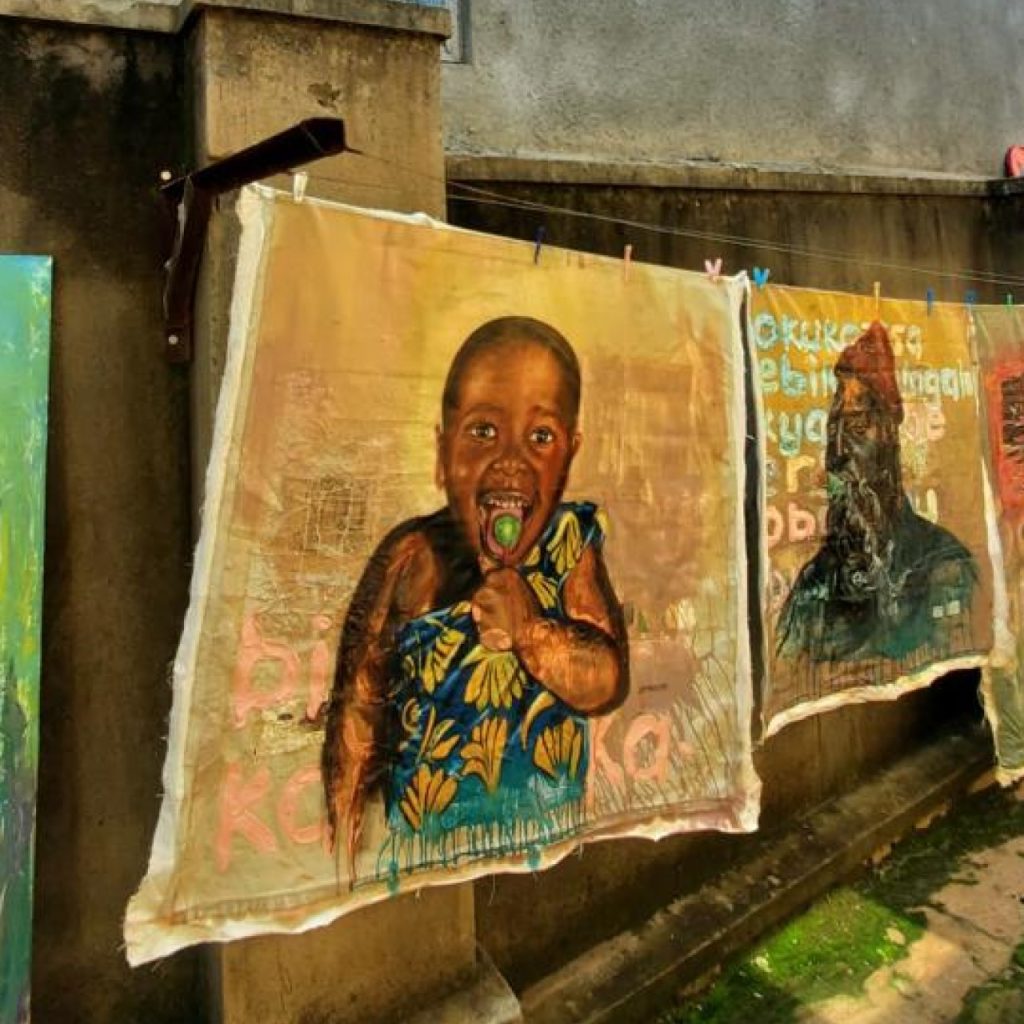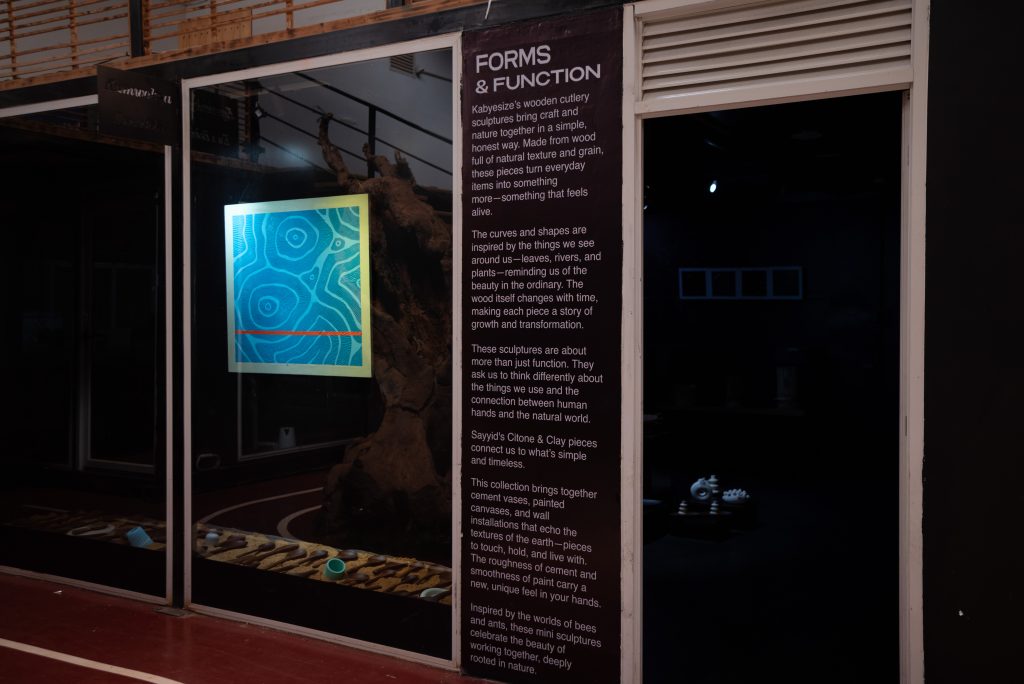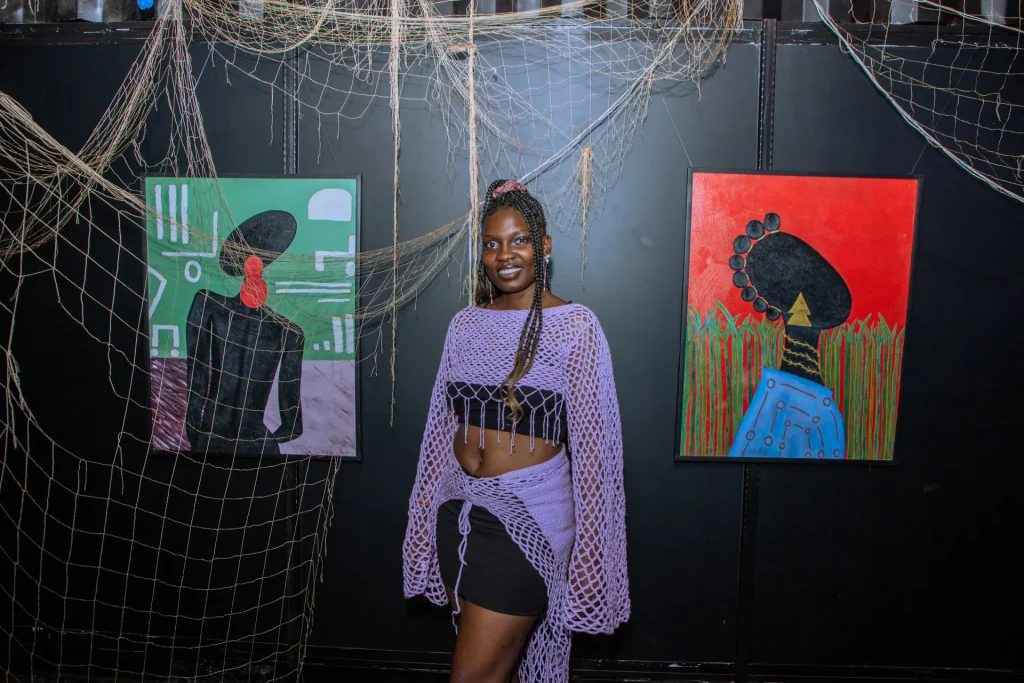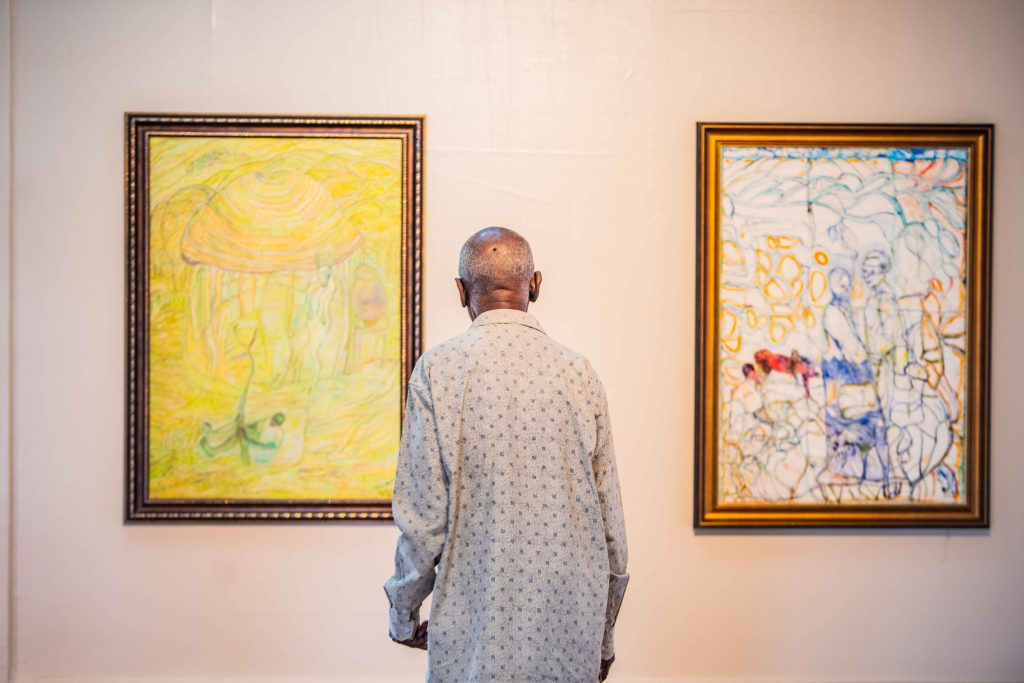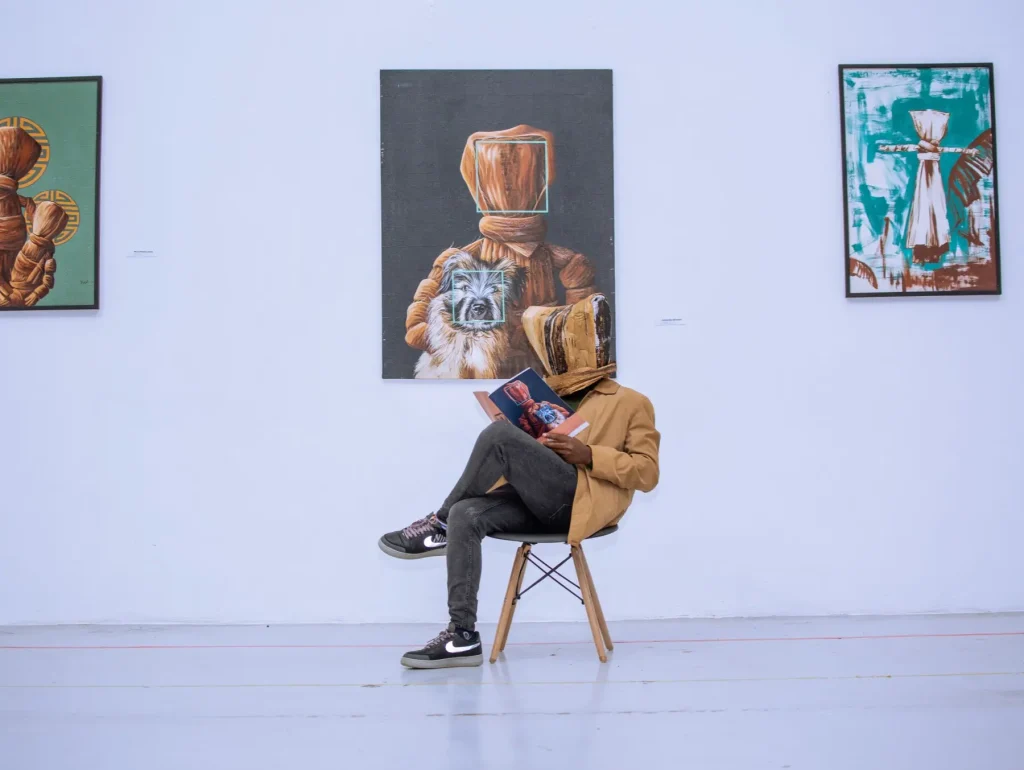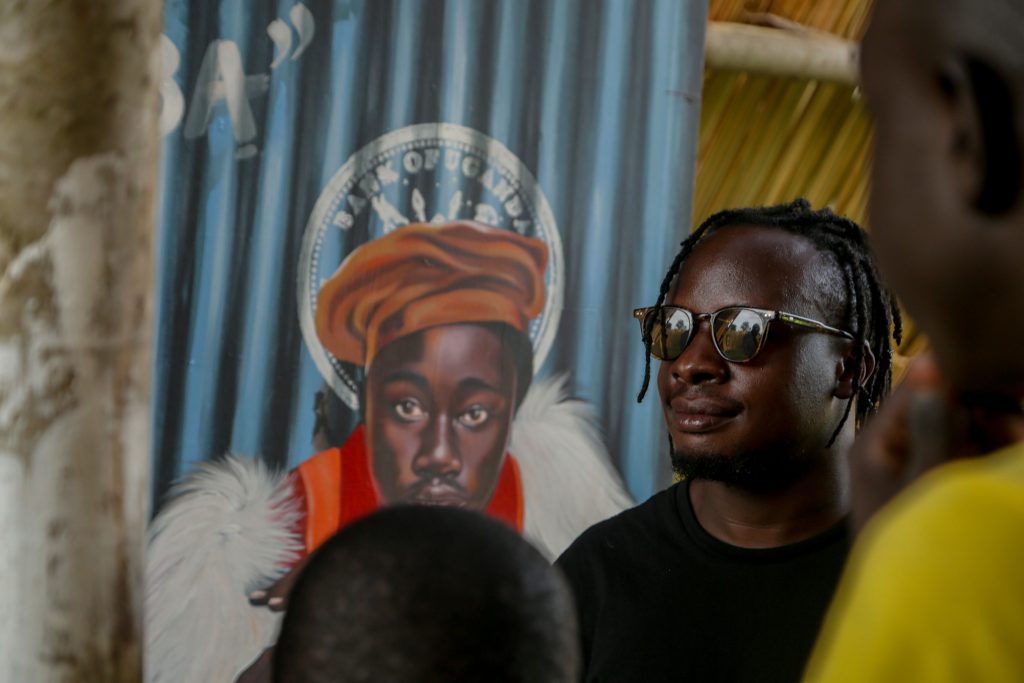As Ssebakijje prepares for his October solo exhibition, a recent studio visit with fellow artists uncovered unexpected truths about his work. What he long considered expressionist actually carries striking pop art qualities – a revelation that may send him back to the drawing board just months before his debut.
Read More
Kabyesize Maximus’ wooden cutlery sculptures blend craft and nature, turning everyday items into living art.
Inspired by leaves, rivers, and plants, the flowing shapes celebrate the beauty of ordinary things. The wood changes over time, telling a story of growth and transformation.
These pieces invite us to rethink how we use what nature gives us, connecting function and the natural world.
Read More
Nile’s Jewel, an intersection of painting and music, both born from Mercy's profound
exploration of identity, heritage, and expression.
Vini Mercy's work is a celebration of her roots and a deep dive into the ideas that shape her
perception of life. Through her art, she brings to light the physical and cultural narratives of
Northern Uganda, particularly, the people who are often characterized by their distinctively
deep dark skin complexion.
Read More
Like a patient weaver, time has painstakingly and slowly spun its intricate web around the figure “Buluma Ochungo Mordecai”, the artist whom the exhibition, Buluma: Amakowola! The Return celebrates. In this exhibition, the ninety-year-old Buluma emerges like the proverbial cat with nine lives; he played his role as an artist, strayed into temporal oblivion, but returned after seventeen years (2004-2021) to show a body of works that has reincarnated him as an artist given a fresh chance to pursue his passion and to fulfil his dreams and destiny. His return is a testament to the enduring human spirit, and the new works on display are deeply entwined with the essence of an artist’s life force and source.
Read More
Zadde by Yiga Joshua is an exploration of the symbol of the banana fibre doll, the materiality of it, and how that constructs imaginaries of parenthood, childhood, and intersections between the two states. The materiality is important because, through wholly organic processes, the doll is created — this is one of the first acts of procreation and propagation by the child. The doll embodies this organic element even in abstraction; it has no fixed state embodied in it, its persona is dynamic and fluid, just as the imaginary of the child is.
Read More
Wamala Joesph Kyeyune’s solo exhibition, his body of work in this exhibition focuses on what
existence is like for the black body through a religious lens. Multiple cultural innovations have
arisen through religious imagery to intervene in societal and individual relations, and to shift
power structures that govern the existence of the black body, Wamala examines how these
innovations have translated and persevered in the Ugandan context.
Read More
